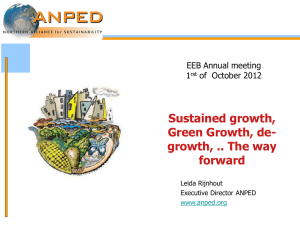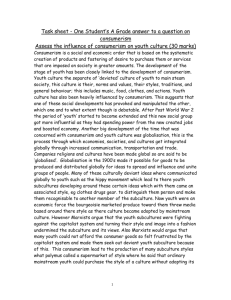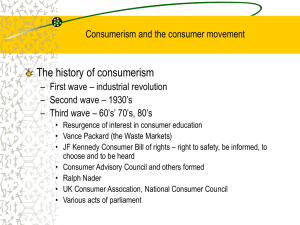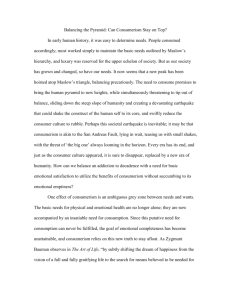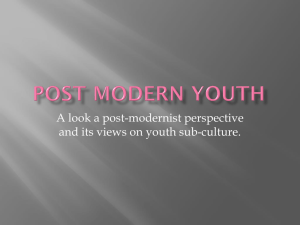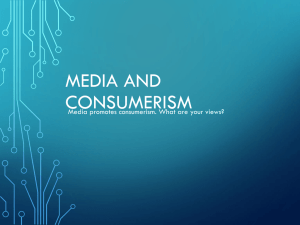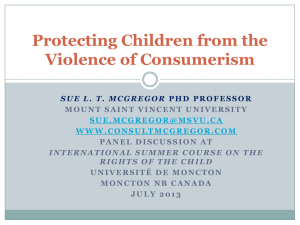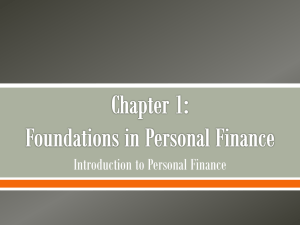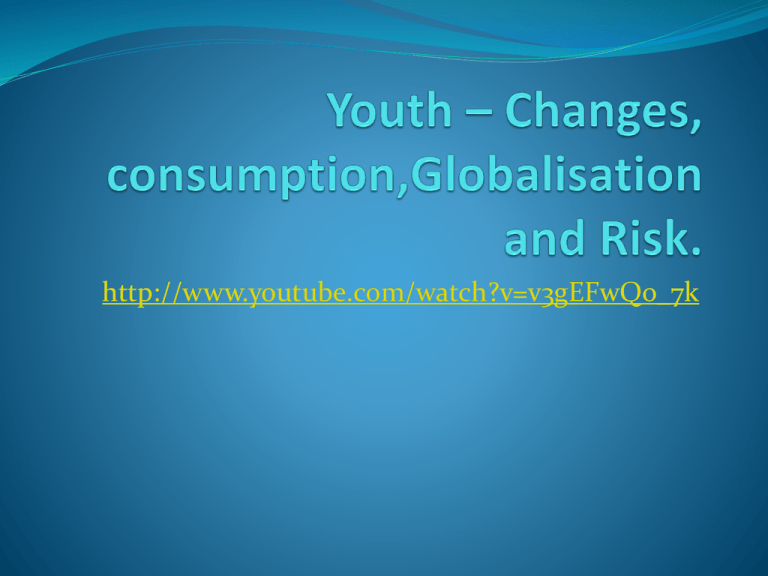
http://www.youtube.com/watch?v=v3gEFwQo_7k
How have the lives of young
people changed over the past 60
years?
Education and employment and qualifications
Gender behaviour and sexual behaviour
Choice of consumer goods
Different media content and exposure
Exclusion from politics
Later separation from parents due to house prices,
debt,
Risks – Violence, drugs, STDs, pregnancy,
unemployment, mental health e.g eating disorders.
SNOWBALLS
Use your Sociological imagination and say one thing
about how consumerism or globalisation has affected
young people as a social group.
Throw your snowball
Pick up a snowball and add a point to it
Repeat
Consumerism
Consumerism is a social and economic
order that is based on the systematic
creation and fostering of a desire to
purchase goods or services in even greater
amounts.
Globalisation
Globalization describes the process by which
regional economies, societies, and cultures have
become integrated through a global network of
communication, transportation, and trade. The term
can also refer to the transnational circulation of ideas,
languages, or popular culture through acculturation.
An aspect of the world which has gone through the
process can be said to be globalized.
Consumption
As we already know consumerism played a big role in
the development of youth culture in post-war Britain.
Young people are attracted to things which are new
and different from their ‘same old, same old’ parent’s
culture.
Clothes, Music, hairstyles, leisure etc – if they can’t
buy it they will create it, like the Punks style.
Eventually INCORPORATION will ensure similar
products are produced in the mass market – because it
makes money.
Consumption
Companies can target them to buy their products and
therefore the identity of young people is becoming
more about having the right stuff than about issues
like class, gender or ethnicity.
Since the 1950s more and more products have been
targeted at young people, BUT children and adults are
also attracted to these things.
What stuff do you think it is necessary to have ??
Globalisation
Globalisation means that young people have more
choice of what to buy. We export products from across
the globe so that you can create new fashions and
styles.
However perhaps products are also becoming
homogenised e.g coca cola is global and may have
pushed out other drinks which were traditional like
iced tea ! From this perspective young people have
become more similar across the world.
Can you think of other examples of this ??
Here are some !!
Coca Cola
Trainers
Baseball caps
Jeans
Nightclubs/discos
Football
Mobile phones
Ipods
McDonalds
Essay planning
Discuss the influence of consumerism on youth
culture (30 marks).
Write down 4-5 AO1 points that you could make.
Write down examples to support each point.
Think of researchers you could mention
Think of any counterarguments to your points or
further analyses you could make.
Possible essay – Discuss the view
that youth cultures are based on
consumerism
Ao1
Ao2
Youth culture only came about in the
Functionalist like Parsons argued that
50s because of products being
targeted at young people e.g
dress/music
Young people are attracted to novel
things so are encouraged to buy more
e.g iphones
Styles created by spectacular youth
cultures have been incorporated in
mainstream youth culture and
influences styles. E.g punky clothes
Bennett argues that youth no longer
form sub-cultures but are influenced
by need for leisure and consumer
goods forming instead ‘Neo Tribes’ e.g
Cod players – relies on companies
making and selling these products.
it was a need for a rite of passage that
influenced youth cultures
Marxists would argue it was resistance
to capitalism that led to sub-cultures
like skinhead and that consumerism
has led to the exploitation of young
people for the benefit of the
bourgoiesie.
Consumerism has caused status
frustration amongst today’s youth.
Neo-tribes argument ignores the fact
that sub-cultures still form around
associations based on gender,
ethnicity and social class.
Timed essay - Discuss the influence of
consumerism on youth culture (30 Marks)
Ao1
Ao2
Define consumerism and youth
With concerns over sustainability
culture
Post War increased
affluence/spending power/products
aimed at youth
Globalisation led to increased choice
(supermarket of style) Polemus –
blending of ethnic styles/Bennett Neo Tribes
Increased affluence and middle class
attitudes leads to development of
Hippies and Skinheads.
Sewell argues that black caribbean
culture is very materialist (bling) and
has influenced white youths in the uk
(possible cause of London Riots)
consumerism is the new ‘folk devil’
Marxists - Many youth still poor and
working-class/cannot afford styles
Some would argue this has led to less
choice (Mcdonaldisation) and
pressure to conform to youth ideals
i.e. eating disorders caused by media.
Some sub-cultures are still
class/gender/ethnicity based
Whilst these sub-cultures were
spectacular and possible forms of
resistance against capitalism, most
young people were ordinary.
SNOWBALLS
What risks do young people
face more than any other age
groups?
Risk associated with Nightlife
Hegemonic Recreational Nightlife Model
(HRNM) and its principal characteristics are:
Spreads very quickly
Its presence makes difficult the existence of other models of
entertainment
Alcohol and other illegal drugs are used as a frequent tool
(fast-leasure, fast-pleasure)
There are risks for health and security (drugs use, sex, drive
ing, violence)
Gender differences in
alcohol
Use of alcohol X Gender
30
3
% cases
25
20
1
15
Male
2
Female
10
5
0
Never,
once or
exuser
1-3 times a
month
Once a
w eek
> 2 times a
w eek
Consum ption frequency
1 Females show significant higher levels of occasional consumption
(1-3 times a month)
2 Similar levels for weekly consumption
3 Males show higher levels in frequent consumption
Gender differences in
Illegal Drugs
CANNABIS
% cases
Use of cannabis X Gender
40
35
30
25
20
15
10
5
0
1
Male
2
Never,
once or
exuser
1-3 times a
month
Once a
w eek
> 2 times a
w eek
Consum ption Frequency
1 Women show higher % of abstinence
2 Men show higher % of frequent consumption
Female
COCAINE
% cases
Use of cocaine X Gender
50
40
30
20
10
0
Males
Females
Never,
once or
exuser
1-3 times a
month
Once a
w eek
> 2 times a
w eek
Consum ption Frequency
Violence
Scientific evidence shows a relationship between
recreational nightlife, alcohol & drug consumption
and violent behaviour:
Therefore higher rates of alcohol and drug
consumption may also explain higher rates of
violence in males.
However there is a strong link between misuse and
violence for both genders
Violence
Violent Behaviour X Gender
30,00%
25,00%
% cases
20,00%
Male
15,00%
Female
10,00%
5,00%
0,00%
carry a gun/knife while
going out
someone
threatened/injured you
with a weapon
you were on a physical
fight in club
environments
Significant higher levels for the 3 behaviours in men
(except in cities of Brno & Berlin)
Gender differences in
Risky driving
Young drivers, especially young male drivers, are much more likely to kill
themselves and others in road crashes, compared to older drivers
Using public transport revelead to be a protective factor
Men show significantly higher levels of risky driving
behaviour
Men have about 4 times more probability to suffer a traffic
crash, but this is probably because they present:
a) Higher levels of alcohol and drug consumption
b) Higher levels of risky driving behaviour
Driving
Gender differences
in risk behaviours
Reasons for rejecting use of public transport by age, gender and North/ South (I)
70
60
50
40
30
20
10
0
14-18
19-21
22-24
25-45
14-18
MALE
19-21
22-24
25-45
FEMALE
SUR
There is none where I live
Services do not run late enough
Prefer to use a car
Don't need it
It is unsafe
Other reason
Risky Sexual
Behaviour
Drugs and Alcohol risks
• 20% males and 13% females aged 15-19 say alcohol was
a main reason for first sex
• 1 in 10 15-16 year olds have had sex after drinking that
they later regretted
• Young people are 3x as likely to have unprotected sex
when drunk
• Therefore positive correlation to contraction of STDs
• Anaesthetic effect of drugs and alcohol may be used to
artificially prolong sexual encounters but this is shown
to be unhealthy especially for girls.
Youth, Risk and social change
Risk Theory (Cieslik and Pollack 2002)
Contemporary life has become unpredictable and full
of risks. This may explain problems in youth of today,
here are examples: Risk of making wrong choices !
Get married, don’t – have kids, don’t - go to uni, don’t !
Will I get divorced? Will I get a job at the end of it?
Should I choose apprentiship, NVQ, A levels – if I get it
wrong I may be stuck at with my parents !!!!
Risk continued
Young people who make wrong choices can end up
homeless, criminalised or stigmatised (teenage
pregnancy)
Stress combined with uncertainty leads to an array of
problems seen in the young , eating disorders, drugs
and suicide.
However some may embrace this uncertainty as
meaning they can make their own choices, for example
many jobs young people are applying for now did not
exist in their parent’s day. (Roberts 1997)
SOCIAL CHANGE - SHIFT HAPPENS
http://www.youtube.com/watch?v=QeoKQbT8BKs

